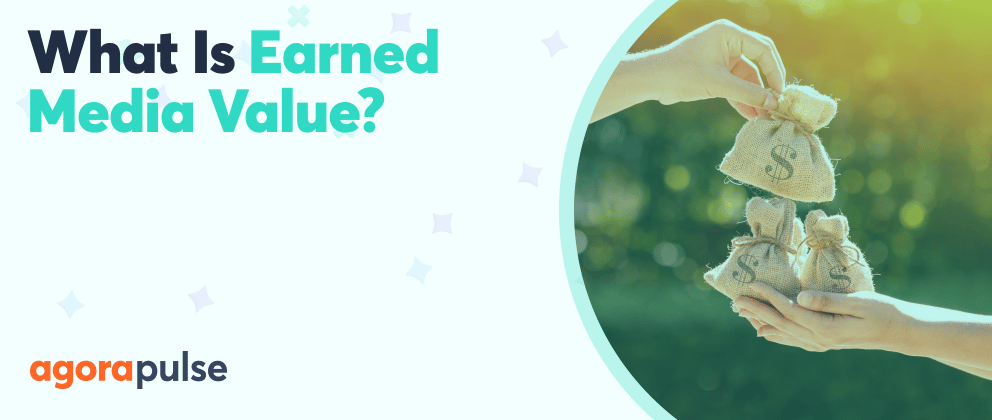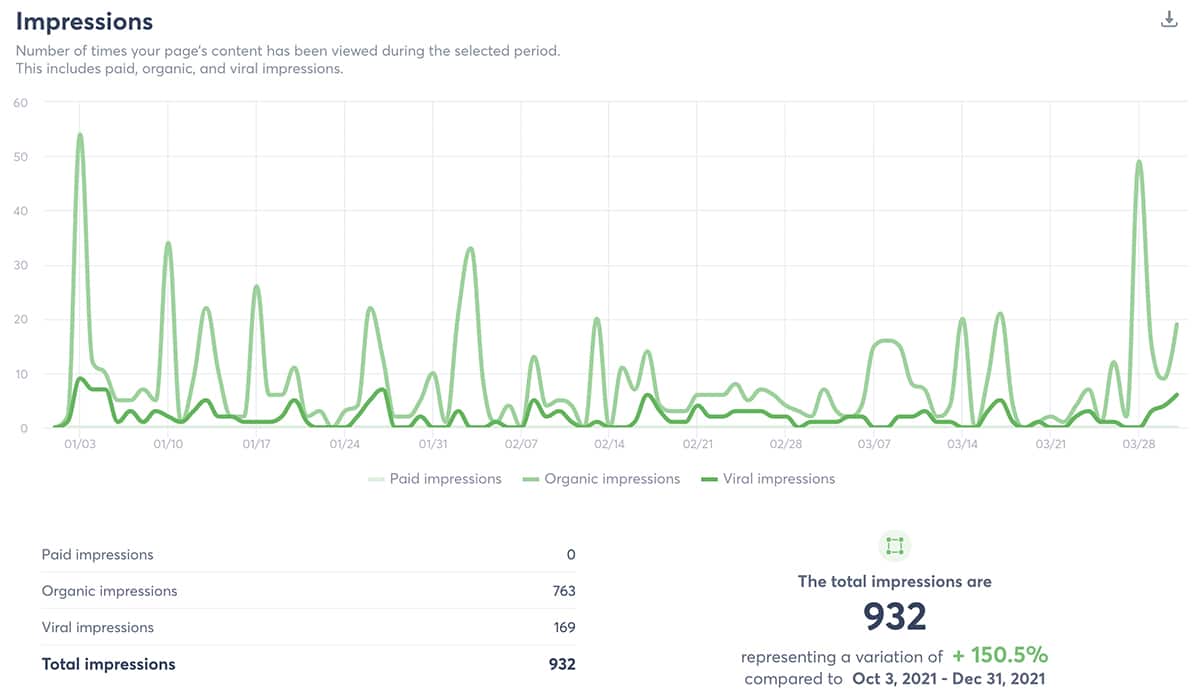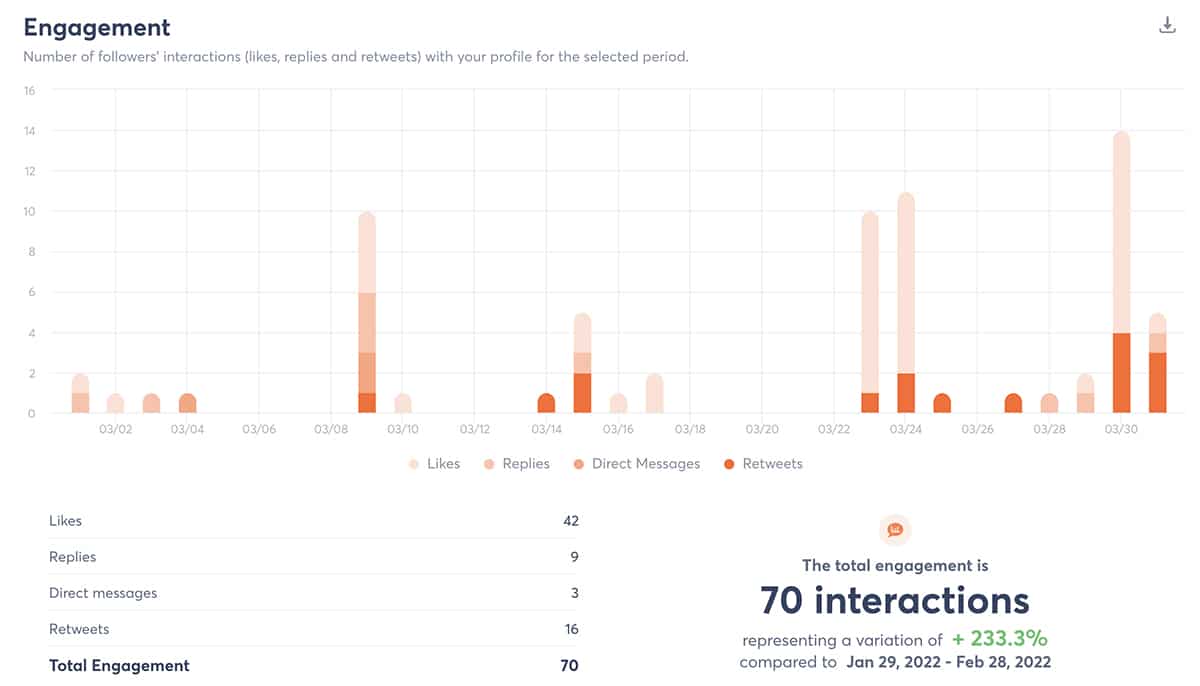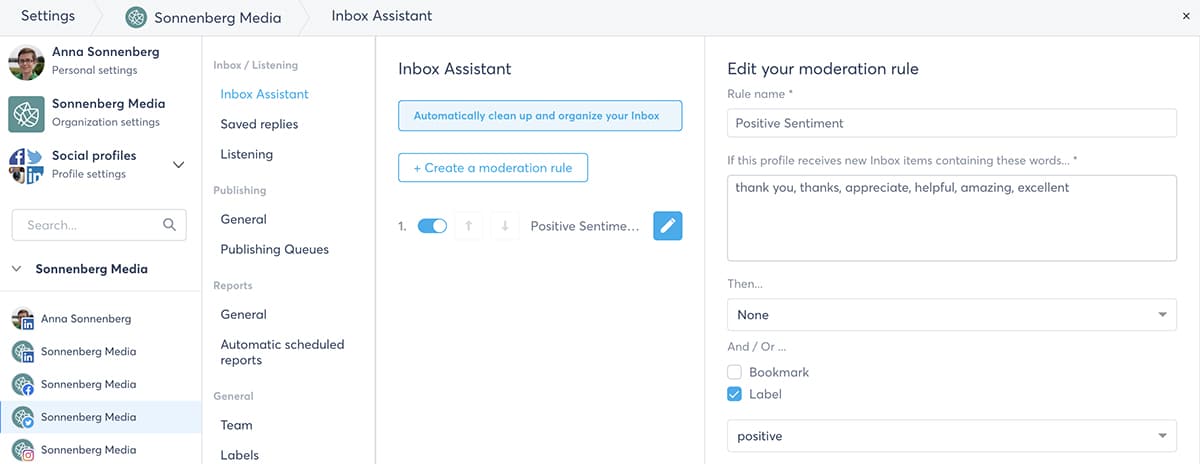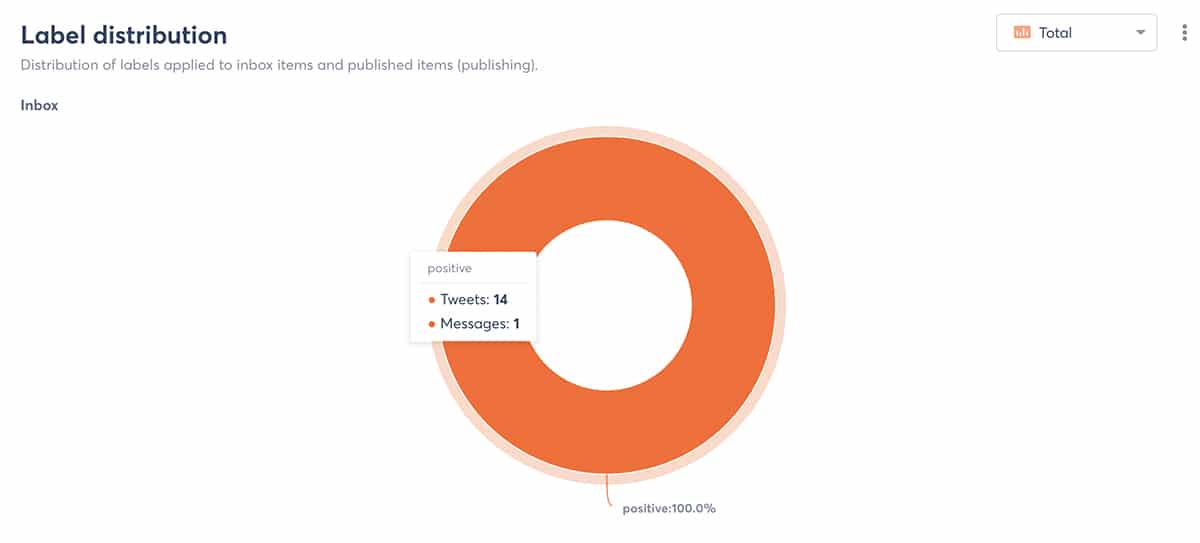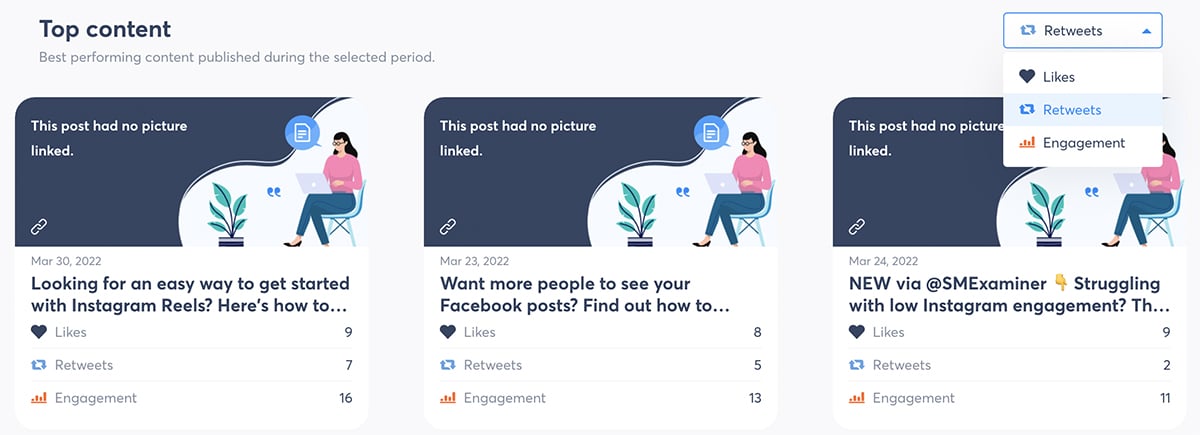When you run branded social media marketing campaigns, you have a lot of control over how much value they create and the return on investment (ROI) your business gains. But earned media works a little differently.
With earned media, you depend on third parties, such as customers, followers, and influencers, to promote your brand.
You can’t exactly control earned media value. However, earned media value can have a major impact on your social media ROI. So how can you make this type of marketing work for your business or agency clients?
Let’s look at how to calculate earned media value and explore ways your brand or your agency clients can maximize this metric.
What Does Earned Media Value Mean?
Earned media value (EMV) is a measurement you can use to track the results and ROI of your marketing and public relations (PR) efforts. This metric focuses on the attention your brand gets from third-party media, such as:
- Customer reviews and testimonials
- Social media mentions and shares
- Influencer posts and stories
- News and magazine articles
- Forum posts and discussions
- Word-of-mouth marketing
Earned media refers to any third-party mentions or features your brand receives organically. It doesn’t include owned or paid media that your company creates or pays for—such as branded content or ad campaigns.
5 Reasons Why Earned Media Value Is So Important
Tracking earned media and calculating its value is critical for every brand. Here are some of the benefits that can come from tracking this metric.
1. Powerful reviews
Customer reviews are much more valuable than you might think. Over 90% of people look up reviews before deciding what to buy. That means nine out of 10 of your customers want to hear what others think of your products and services before making a purchase.
Think online reviews only apply to e-commerce brands? Consumers seek out reviews for everything from local organizations to business-to-business (B2B) companies. No matter what type of brand you market, reviews are enormously important.
The type and number of reviews your business gets can also affect how customers perceive your brand. For example, more reviews often mean more sales. Businesses with 10 or more recent reviews can earn over 50% more revenue than average, according to G2.
2. Added authenticity
Say your team devotes a lot of effort to creating lifestyle content for social media. No matter how much your audience likes the brand, they’re likely to distrust owned channels and paid campaigns—at least a little.
After all, branded content and ad campaigns tend to appear overly polished and less genuine. If consumers only ever see your owned and paid campaigns, they may perceive your brand as inauthentic. As a result, they may opt not to buy from your business.
Because earned media comes from unaffiliated third parties, it lends credibility and authenticity to your brand. According to G2, over 90% of consumers trust online reviews. Most believe online reviews as much as recommendations from friends and family.
3. Expanded reach
Using paid and owned channels, businesses can reach a big part of their customer base. But they can’t always rely on these channels to reach people who don’t follow their brand. By focusing solely on these channels, a business can miss out on key opportunities to reach more customers.
With earned media, businesses have the chance to connect with more people in new ways. That means they may be able to expand their customer base and increase revenue, simply by getting people to talk about their brand.
4. Increased resilience
Relying completely on a single marketing channel is always a risky choice. For example, if you primarily use Instagram, your social media ROI could take a hit when algorithm updates. If you mainly run Facebook ads, you could end up spending more when the platform’s tracking options change.
Adding earned media to your marketing mix gives your business added resilience. When the ROI from one platform changes, you have more options to fall back on so you can continue to reach your goals.
5. Affordable costs
Running paid and branded campaigns can be costly. For some channels, the ROI may be low enough that marketing campaigns aren’t always worthwhile.
One of the biggest benefits of earned media is that it costs your business almost nothing. You don’t pay directly for earned media. But you may need to allocate a small part of your budget to oversee earned media and seek out opportunities.
For example, you may need to devote some of your budget to review monitoring, community management, and influencer outreach, so you can leverage earned media successfully.
Are There Downsides to Earned Media?
Although earned media can add a lot of value to your marketing efforts, it may have some drawbacks. Make sure you know about the potential downsides, so you can address them effectively.
Managing negative customer reviews
Hopefully, most of your customer reviews will be positive. But no brand is designed for absolutely everyone. From time to time, you’re likely to get at least a few negative reviews. According to Wombly, 19% of an average business’s reviews are negative.
It’s easy to assume that negative reviews are bad news for your business. After all, negative reviews can convince people not to buy from your brand.
In reality, however, negative reviews may not be as harmful as you think. They can make your business appear more credible. They can also help potential customers learn more about your products and make a more informed decision.
Of course, some negative reviews on social media may cause you to lose out on business or require time to mitigate. But in general, having a small percentage of negative reviews is typically a good thing.
Finding the right community
In some cases, influencers and media outlets may take the initiative to mention your company. Other times, your team may have to seek out influencers or media contacts, and make a point of forging a relationship.
In either case, you’ll have to invest time into assessing the potential value of the relationship. After all, not every earned media opportunity is the ideal fit for your brand.
For example, some influencers may have large audiences, but their followers may not have an interest in your brand. Similarly, a news outlet may have an extensive reach, but their audience may not fit your customer profile.
To consider opportunities efficiently, create an earned media matrix for your brand. First, use a tool like BuzzSumo to research and evaluate influencers and media outlets. Then use the earned media value formula below to estimate the potential results and find the right influencers.
Focusing too much on earned media
Customer reviews, influencer mentions, and news features can have a big effect on your social media ROI. But earned media value can’t tell you everything you need to know about your potential return.
To get an accurate understanding of your marketing ROI, use the formula below to calculate earned media value. Then factor in the cost and profit from your other efforts—including paid campaigns and owned channels—to determine which offer the most value to your brand.
How to Estimate Your Earned Media Value
Calculating earned media value can be tricky. But when you use the right formula and metrics, you can estimate this measurement efficiently.
Earned media value formula
To calculate earned media value, start with this standard formula:
Impressions x Equivalent CPM = Earned Media Value
First, calculate the total number of impressions you gained from earned media. To get a comprehensive number of impressions from forums, reviews, and other sources, use a business intelligence tool like Brandwatch or Domo.
If you’d rather focus on earned impressions from your social media posts, you can use Agorapulse analytics. Go to the Agorapulse reports tab and look for the Impressions overview. The Viral Impressions tally reflects how many times someone saw your page’s content because one of their friends amplified it.
Once you’ve calculated your earned impressions, multiply that figure by your brand’s standard cost per thousand impressions (CPM). You can get this cost by defining your brand’s usual CPM for paid or owned campaigns.
Because you don’t pay for earned media, this factor is considered an equivalent CPM. It refers to the amount you’d typically pay per 1,000 impressions, but it doesn’t reflect actual spend.
Alternative earned media value metrics
Measuring impressions is useful for estimating earned media value. But it isn’t the only way to assess value. To understand the full impact of your earned media, replace impressions with one of the social media metrics below when using the formula above.
Engagement
Impressions reflect the number of times people saw your earned media content. But what if you’re more interested in how many times people interacted with it? Measuring engagement can give you a better sense of how people responded to content about your brand.
Because of platform limitations, measuring engagement on third-party content can be challenging. But you can use Agorapulse to measure how your branded content earned additional engagement.
To measure shares and retweets, go to the Reports tab and scroll down to the Engagement section. You can also sort all the content you published by shares or retweets to see which content your audience amplified most.
Sentiment
Monitoring impressions and engagement is great for assessing the volume of earned media. Yet these metrics don’t tell you whether the media you earned was positive or negative. That’s why it’s so important to keep an eye on sentiment.
To track sentiment with Agorapulse, use the Inbox Assistant to create a moderation rule. You can automatically apply “positive” labels to engagement from happy customers and influencers. You can apply “negative” or “neutral” labels to engagement that contains frustrated or dissatisfied keywords.
Then you can use the Reports tab to track sentiment during any time period. The label report automatically shows the number and percentage of positive, neutral, and negative engagement, so you can quickly assess customer sentiment.
Share of voice
Measuring your brand’s earned media value can be helpful as a standalone metric. But comparing your brand’s buzz to your competitors can give you even more helpful insights.
To measure share of voice, you need to know how many mentions your brand and your competitors have received. You should also know how many total mentions your industry has generated. Then you can use the formula below to get a social share of voice for each brand.
Social Share of Voice = Total Industry Mentions / Brand Mentions x 100
To get all the data you need to calculate this metric efficiently, use a business intelligence tool. That way you can tally share of voice using industry-specific information without having to gather data manually.
5 Ideas for Increasing Earned Media Value
Earned value comes from third-party channels, you can’t completely control it. Yet you can take steps to encourage people to talk about your brand, products, and services—which can create tons of value.
1. Publish engaging content
Getting your audience to share your social media content is one of the easiest ways to increase earned media. If you already have an engaged audience, your content may generate a lot of likes and comments. But how can you increase shares and retweets organically?
Agorapulse’s content report can help. Open the Reports tab and navigate to Content > Global. Then look for your top content and sort by retweets. Review your top posts to identify what drives your audience to share content—including topics, copy, and creatives.
Then use what you’ve learned to create content that’s shareworthy. Social media trends can evolve quickly, so it’s helpful to revisit top posts monthly to make sure you’re always creating content your audience loves.
2. Inspire customer reviews
Because customer reviews can be so valuable to your business, it’s helpful to have as many as possible. Yet it’s important to approach the review process carefully. You can’t offer incentives in exchange for reviews, but you can encourage happy customers to write them.
To get more reviews, consider adding an email to your automated purchase sequence. A week or two after customers receive their orders or begin using your products, email them to make sure they’re happy with their purchase and prompt them to leave a review.
On social media, you can share some of your best customer reviews. Then you can urge customers to leave their own testimonials. Give them a link to Google, Facebook, or other review sites so they know exactly where to share their experience with your brand.
3. Form relationships with influencers
In many cases, influencer partnerships require paid sponsorships that come with hefty price tags. If you want earned media from influencers, however, it’s helpful to form mutually supportive relationships.
First, make a list of the top influencers in your niche. Be sure to include micro-influencers, who have smaller audiences but can still provide a ton of earned media value. Make a point of regularly interacting with the influencers’ content and getting to know each other.
Then reach out to these influencers when you have a new product or special to announce. Offer to send a complimentary sample or product so they can create content around it and share it organically with their audience.
4. Reach out to industry news outlets
Depending on your industry, news coverage may also provide significant earned media value. To leverage this channel, make a list of local or industry-specific news outlets to connect with. Then add the editors to your PR list and send them relevant press releases.
You can also seek out unique press opportunities via outlets like Help a Reporter Out (HARO). Sign up for relevant HARO emails and look for stories that would be a good fit for your products or opportunities to promote your brand.
5. Join relevant forums and groups
Reddit forums, Facebook groups, and other online discussions can be incredibly valuable for increasing earned media. To get people to talk about your brand, join groups and forums that are relevant to your business, industry, or local area.
Then watch for questions and conversations on topics related to your brand or use a business intelligence tool to find them automatically. Look for opportunities to answer questions about your brand or mention it in related discussions. In many cases, you can guide conversations toward your brand to create more earned media value.
Wrapping Up What We Learned About Earned Media Value
Earned media can generate substantial value for your brand. By monitoring your company’s mentions, reviews, and word-of-mouth marketing, you can track how people are talking about your brand and assess the value you gain from this added exposure.
Keep a close eye on the ROI of your earned media valueCheck out our free trial of Agorapulse to help you schedule, track, and measure all your social media efforts.

